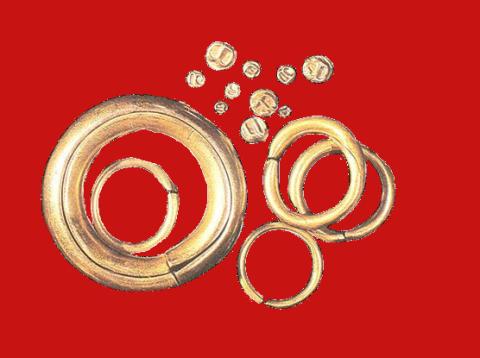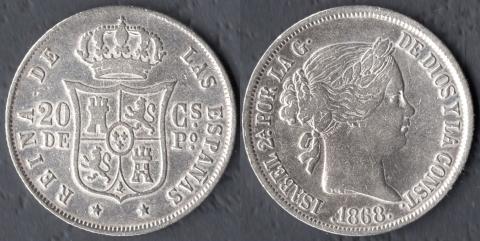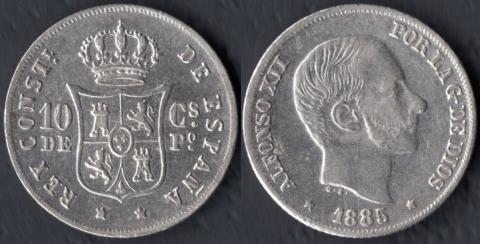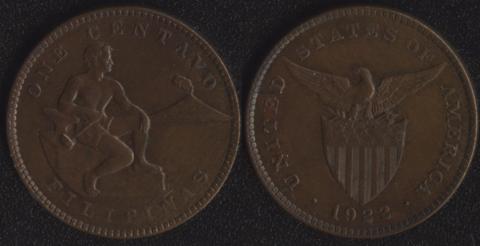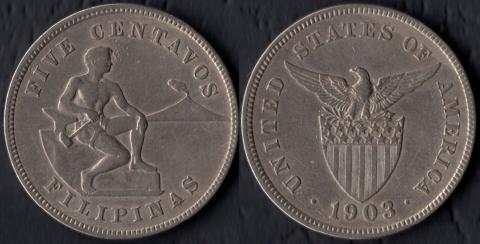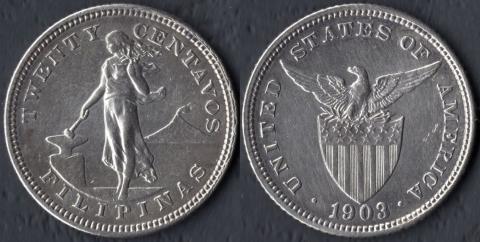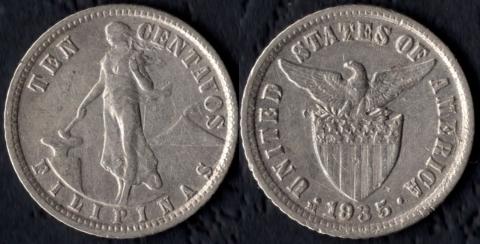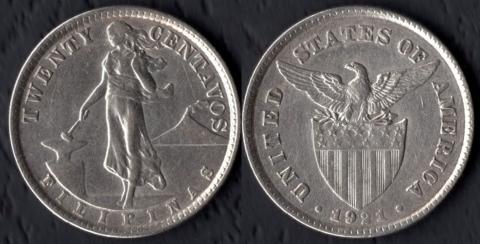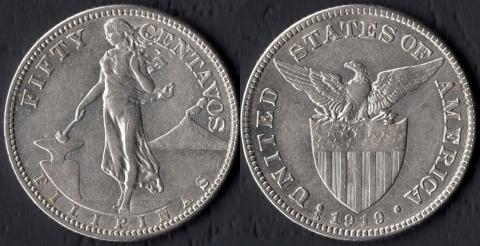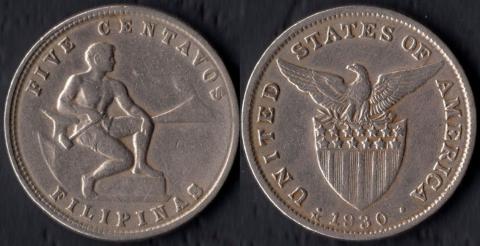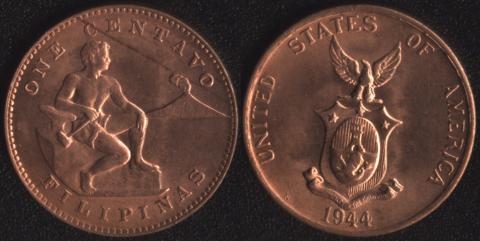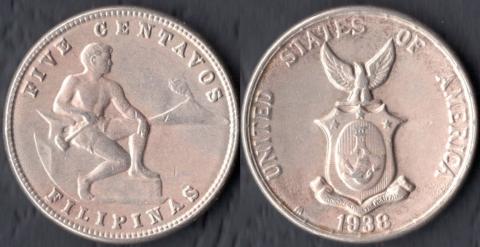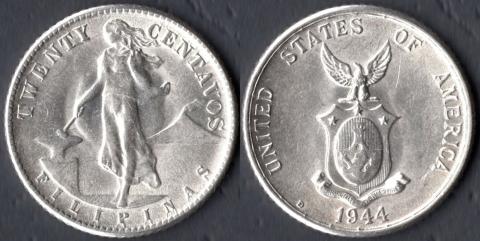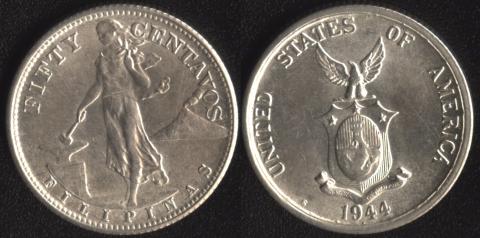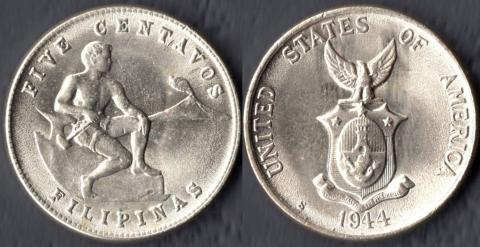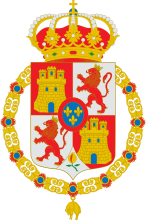
Even before the Spaniards arrived on the Philippine islands, there was a distinctive civilization with which neighbors from mainland China, Thailand, the islands of Java and Borneo traded. Initially, trade was dominated by commodity exchange, which later gave way to settlements in cowrie shells. Somewhere in the 9th-12th centuries, in the Philippines, calculations began to use "piloncytos" - small gold balls with a nadchekan weighing up to 3 grams, as well as gold, the so-called "barter rings."
In 1521, the Spaniards arrived on the island under the leadership of Fernand Magellan, who soon found his death here in an internecine clash between two warring tribes. In 1543, the island was given its current name, in honor of the then King of Spain, Philip II. In 1565, the first Spanish settlement was founded on the island and the era of Catholicization and Hispanization of the local population began, by which time it was already mostly adherents of Hinduism or Islam. As in the rest of its colonial possessions, silver pesos, mainly Mexican and Peruvian coinage, are massively imported into the Captaincy General of the Philippines. I have repeatedly covered this topic in my reviews, so let's immediately move on to coins directly issued in the Philippines. I will add only one interesting fact. To control the money circulation in the colony, according to the decree of October 27, 1832, all imported currency was preliminarily stamped in the form of a stamp depicting the crown and inscriptions F7 (initials of King Ferdinand VII of Spain) or YII (initials of Queen Isabella II of Spain). At the beginning of the 19th century, in South America, after liberation from colonial dependence, a number of newly formed states began to issue their own coins with revolutionary slogans. After recognition of their independence, Spain continued to supply the Philippines with silver coins from South America, but fearing that the local population would follow the example of the South American colonies, seditious mottos were destroyed on coins and the above over-coins were also placed.
For all its worldwide popularity as a means of payment, the Spanish dollar (8 reais) had a significant drawback in circulation - there was no small bargaining chip in the Philippines, and therefore often the dollar was chopped into equal parts, thereby receiving wedge-shaped "coins" in denominations of 1 real. Smaller factions of the real simply did not exist. Therefore, it became necessary to mint small bargaining chips. In 1788, the only "own" silver coin of this period with a face value of ¼ real was issued. The first copper bargaining chips were issued in the middle of the 18th century and were called "barilla," "octavo" (1 ⁄ 8 real) and "quarto" (¼ real). Coins were made by manual minting with roughly executed stamps. On the coins there is an image of the coat of arms of the Spanish East Indies on the obverse and a crowned lion on the reverse. From the names of the first colonial coins came the modern Filipino (Tagalog) words "quarta" - the common name for all money and "barya" - small bargaining chips. A decree of 1837 established an exchange rate of 20 quarto for 1 real (160 quarto for 1 peso).
However, the minting of copper exchange coins soon had to be stopped. Cunning local highlanders (igorots) mastered the issue of counterfeit coins in denominations of 2 quarto, which undermined the confidence in copper coins among the rest of the colony's population.
In 1857, Queen Isabella II of Spain issued a decree establishing her own mint in the Philippines (Casa de Moneda de Manila). In 1861, a special decree ordered the mint to issue its own silver coins in denominations of 10, 20 and 50 centimos. Silver for blanks was obtained by melting South American coins withdrawn from circulation. In 1864, coins with the Queen's profile entered circulation and immediately received the nickname "Isabellins." The engraver of the coins was Luis Marchionni e Hombrón (Luis Marchionni y Hombrón, 1815-1894).
After the death of Isabella II, coins with the profile of the next king of Spain, Alfonso XII. engraver - Gregorio Sellan e Gonzalez (Gregorio Sellán y González, 1829-1893). Coins of the Philippines are easily confused with coins of Spain of the same circulation period. They do not indicate the name of the Captaincy General, the portrait of the king is the same, and the coats of arms of the Spanish East Indies and the Kingdom of Spain are very similar to each other.
KM # 148, 10 centimo 1885, silver 0.835, 5.4 M ex. years 1880-1885
KM # 150, 50 centimo 1885, silver 0.835, 22.7 M ex. years 1880-1885
It is noteworthy that coins with the date "1885" continued to be issued until 1898. This is due to their huge, for that time, circulation.
The coin with the profile of the next king of Spain, Alfonso XIII, in denominations of 1 peso of the 1897 model, was the last issued in the history of the Spanish Philippines. In 1896, anti-Spanish unrest began in the Philippines, and in 1898, following a military conflict with Spain, the United States of America took over the former Spanish colonies: the Philippines, Cuba, Guam and Puerto Rico for $20 million. Encouraged by the premonition of the imminent independence from almost 500 years of colonial rule, the Philippines hastened to announce the creation of an independent Philippine Republic under the leadership of General Emilio Aguinaldo, and even issued a copper coin in denomination of 2 centavos of two types, which circulated on the island of Panay until March 23, 1901. But on December 21, 1898, US President William McKinley signed a decree on the "benevolent assimilation" of the Philippines and the Americans who arrived on the island entered into confrontation with the rebels, which led first to a direct clash, and then to a protracted guerrilla war, which led to the death of almost 1 million Filipinos.
In 1903, the United States Congress passed the Philippine Coins Act and soon the first line of coins was issued at US mints. On the obverse of the coins for the first time in the history of the Philippines, the name of the state in Spanish "Filipinas" is indicated. At the same time, the reverse depicts the coat of arms of the Military Government of the Philippine Islands of the United States and indicates the name of the true owner - "United States of America." On the obverse of the coins of junior denominations is a Filipino with a hammer in his hand, sitting at an anvil against the background of the smoking Mount Mayon volcano (Luzon Island). The obverse of the silver coins shows a Filipina walking, again with a hammer, anvil and volcano in the distance. The coins were designed by Filipino sculptor Melicio Figueroa (Melicio Figueroa, 1842-1903) and chief U.S. Mint engraver Charles Edward Barber (Charles Edward Barber, 1840-1917). With the introduction of this line of coins into circulation, the circulation of Spanish coins of the colonial period was stopped.
KM # 162, ½ Centavo 1904, Bronze, 5.7 MMex. production years 1903-1904
KM # 163, 1 Centavo 1922, Bronze, 3.5 MMex. production years 1903-1936
KM # 164, 5 centavos 1903, copper-nickel alloy, 8.9 M equivalent, production years 1903-1928
KM # 165, 10 centavos 1904, silver 0.900, 5 M ex. years 1903-1904
KM # 166, 20 centavos 1903, silver 0.900, 5.4 M ex. years 1903-1905
Coins in denominations of ½ centavos were not popular with the population, so their minting was soon discontinued, and a significant part of the circulation was withdrawn from circulation and melted down. By 1905, the cost of minting silver coins exceeded their face value and therefore most of them settled among the population. In this regard, in 1907 silver coins were issued already on blanks of a smaller sample (0.750 instead of 0.900) and a reduced size, nevertheless, while maintaining the exchange rate to the American currency 2:1 . The plots on the obverse and reverse, at the same time, remained unchanged.
KM # 169, 10 centavos 1935, silver 0.750, 1.3 M ex, years 1907-1935
KM # 170, 20 centavos 1921, silver 0.750, 1.8 M ex, years 1907-1929
KM # 171, 50 centavos 1919, silver 0.750, 1.2 M ex, years 1907-1921
In 1920, the US Government decided to reopen the mint in Manila, as it considered it advisable to mint coins directly in the Philippines.
In 1930, a coin with a face value of 5 centavos on copper-nickel blanks was also reissued in a reduced size. The fact is that after the re-issue of silver coins in a reduced format, illiterate Filipinos began to confuse the 5 centavos of the 1903 model with the silver 20 centavos of the 1907 model.
KM # 175, 5 centavos 1930, cupro-nickel alloy, 2.9 M equivalent, years 1930-1935
In 1935, the Americans proclaimed the creation of the "Commonwealth of the Philippines" - a transitional formation before the Philippines gained full independence. In this connection, in 1937 a line of Philippine coins with a new coat of arms came into circulation. The obverse plots of the coins and all the inscriptions remained in place.
KM # 179, 1 centavo 1944, bronze, 58 MMex. years of production 1937-1944
KM # 180, 5 centavos 1938, copper-nickel alloy, 4 million ex. years of production 1937-1941
KM # 181, 10 centavos 1945, silver 0.750, 137.2 M ex, years 1937-1945
KM # 182, 20 centavos 1944, silver 0.750, 28.6 M ex, years 1937-1945
KM # 183, 50 centavos 1944, silver 0.750, 19.2 M ex. years of issue 1944-1945
The break in the minting of coins of this line in the period 1942-1943 is due to the Japanese occupation of the island in World War II. The Japanese administration issued banknotes throughout the entire period of occupation .
In 1944-1945, for 5 centavos coins issued at US mints, the material of the blanks was changed. To save strategic nickel, zinc was added to the alloy.
KM # 180a, 5 Centavos 1944, Copper-Nickel-Zinc Alloy, 14 M equivalent, years 1944-1945
Before the Japanese army invaded Corregidor Island, American and Filipino troops managed to transport most of the gold assets to Australia. However, to avoid the Japanese capturing the remaining valuables, they had to flood the central bank's stored silver coins in Manila Bay, including poorly sold commemorative coins issued in 1936 to mark the founding of the Commonwealth of the Philippines. These were three types of coins, denominations of 50 centavos and 1 peso (two types). The obverse of the coins depicts in various variations High Commissioner William Francis Murphy - the personal representative of the President of the United States in the Philippines and President of the Philippines Manuel Luis Quezon. Subsequently, in the 1960s, several coins were raised to the surface, but by that time they were already badly damaged by sea water. Issued in already small editions (20 thousand copies. a coin with a face value of 50 centavos and 10 thousand exes. 1 peso coins), coins have become an exceptional numismatic rarity.
It should also be noted that in the period from 1913 to 1930 for the island of Culion, where the leper colony was located, own coins were issued.
